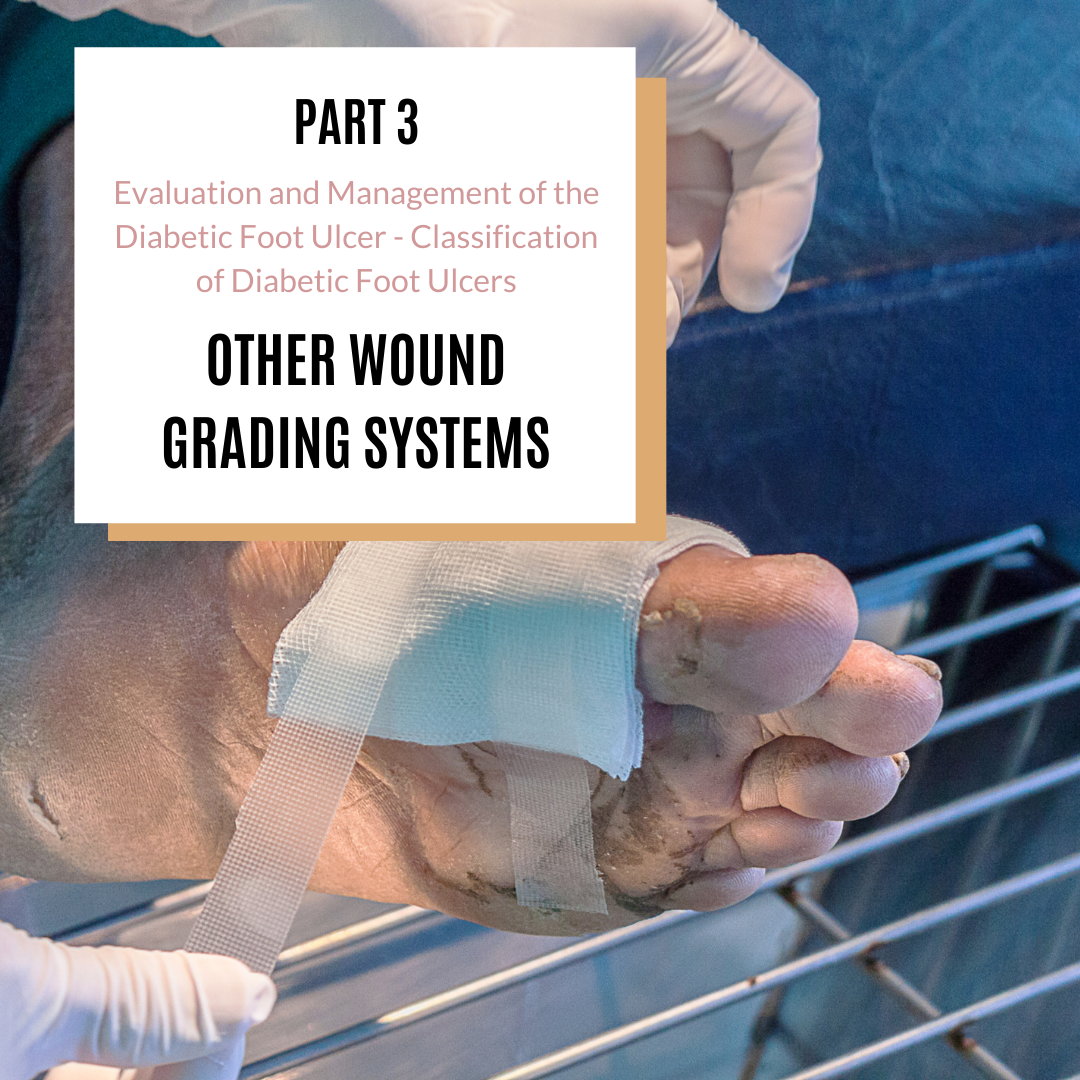Rx Pad
Part 3: Evaluation and Management of the Diabetic Foot Ulcer - Classification of Diabetic Foot Ulcers, Other Wound Grading Systems
In this 3 - Part series, we're looking at the most commonly used classification scales currently in use to classify diabetic foot ulcers, including:
- Wagner Grading System
- University of Texas Grading System
- IDSA - The Infectious Disease System of America
- IWGDF - The International Working Group on the Diabetic Foot
- Long Beach Wound Score
- WIFI - Wound Ischemia and Foot Infection
- WHI - Wound Healing Index
Each scale has its strengths and weaknesses, trading ease of use for clinically relevant categories for decision-making. Additionally, it is often unclear if the classification scale was developed for research, audit, or clinical care.
If you missed the first two posts in this series, you can read them here Part 1, Part 2.
University of Texas
The University of Texas grading system combines the presence or absence of infection and perfusion in a verticle scale and the depth of the wound on a horizontal scale to generate a 16-choice matrix.
As depth of the wound and the severity of infection and ischemia increase, both amputation and wound healing failure increase. A comparison of the UT versus the Wagner system shows that the UT system is more descriptive and shows a greater association with wound healing and amputation prediction.
IDSA
The Infectious Disease Society of America (IDSA) bases its classification system on the severity of diabetic foot infections and shows an increasing trend for more frequent and higher levels of amputation compared with the seriousness of infection.
IWGDF
The International Working Group on the Diabetic Foot (IWGDF) attempted to address all of the relevant comorbidities contributing to the pathology of a diabetic foot ulcer by developing a classification system for research purposes baesd on five key categories: perfusion, extent/size, depth/tissue loss, infection, adn sensation (PEDIS). While this has been used in research, it has been infrequently applied in daiily clinical practice.
Long Beach Wound Score
In an attempt to combine the most important features from multiple scoring systems. Dr. Michael B. Strauss described a system using an easy-to-derive, intuitive 0-to-10 scoring system in order to make logical decisions between limb salvage or major amputation. While not widely used, it demonstrates good inter-rater reliability and is easy to appy - both essential elements of a useful wound score. Studies validating its use in predicting wound healing are underway.
WIfI
The Society for Vasculas Surgery published risk stratification based on three major factors that impact amputation risk and clinical management - wound, ischemia, and foot infeciton (WIfI) - to generate a matrix of 32 permutations of categories that generally have worse outcomes as one moves down and to the right.
Wound Healing Index (WHI)
A different approach to generating a wound score involves mining a wound care registry for factors associated with healing. Data from over 50,000 wounds in the U.S. Wound Registry were analyzed to identify 10 factors that were associated with wound healing in DFUs. These were then used to calculate a WHI between 0 to 100 and tested prospectively to predict healing of the diabetic foot ulcer. In an analysis of over 5,000 diabetic foot ulcers, the percentage of wounds that healed with a WHI of < 33, 34 - 67, or > 67 were 35.5%, 50.1%, and 72.8% respectively. This was calculated at the time of first presentation without considering any treatment modalities employed. The score is only calculable by using an integrated EHR. In a world where EHRs, Meaningful Use, quality measures, and outcomes reporting are becoming requirements for reimbursement, we may only see that this is the wave of the future with regard to resource allocation for advanced therapies.
Summary
Given the wide variety of wound scoring scales available, one must consider the reason for using them in the first place. Some allow the clinician to risk-stratify patients to determine who is at greatest risk of wound healing failure or amputation, while others have been relegated as a justification for employing therapeutic modalities that would otherwise be denied reimbursement. At this time, there is no single grading system that meets both needs. Future hyperbaric research using specific grading criteria are required before we can see alternatives to the Wagner grading system with regard to utilization of HBO2.
Reference: Hyperbaric Medicine Practice, 4th Edition by Harry T. Whelan, MD and Eric P. Kindwall, MD
Discover the 3-Steps to Become a Physician Certified in Hyperbaric Medicine
The 3 steps physicians need to follow, but no one ever explained to you.
This free 3-part mini-course reveals the exact path to become a physician certified in hyperbaric medicine . . .
- How to earn privileges from your hospital to practice hyperbaric medicine
- How to get certified or boarded in hyperbaric medicine, and what’s the difference
- Training required for physician supervision and billing of hyperbaric medicine
When you subscribe to the blog, we will send you an e-mail when there are new updates on the site so you wouldn't miss them.



Comments